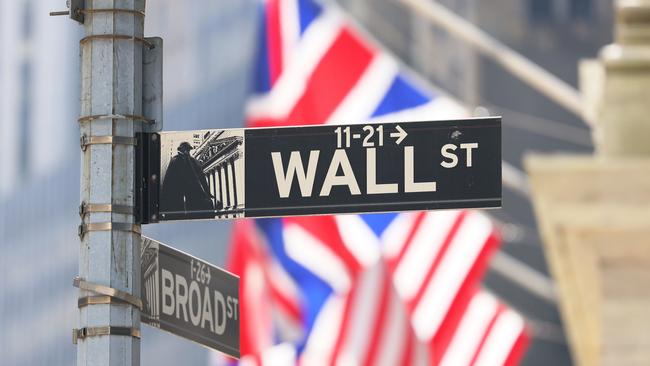Wall Street nailed earnings but missed the bear market
It is a reminder of the perils of forecasting markets: You can be exactly right and dead wrong at the same time.

If I told you that a group of really smart people on Wall Street were able to predict exactly how much money America’s biggest companies would make a year from now, you might think they could tell us where the stockmarket would go.
Not so much.
Last year Wall Street analysts, the communicators-in-chief to the investor community for the likes of Goldman Sachs, JPMorgan Chase and Citigroup, were collectively spot on in estimating corporate earnings for S&P 500 companies. The FactSet consensus prediction is for $US221 a share this year, exactly as predicted, with the final quarter still based on estimates.
The miss of less than $US1 is the smallest in percentage terms for estimates at the end of the year since 1995, data from Refinitiv IBES show, while the consensus has on average been out by more than 9 per cent since then.
Their success is rather spoiled by Wall Street’s total failure to anticipate the bear market in stocks and bonds.
The disconnect is a reminder of the perils of forecasting markets: You can be exactly right and dead wrong at the same time.
The reason strategists called the S&P 500 so badly wrong was simple enough. Earnings, the vital ingredient in the price-to-earnings ratio, weren’t the story this year. Bond yields were. The Federal Reserve raised rates, the 10-year Treasury yield soared and the valuations investors put on those earnings were crushed. The price part of the P/E ratio plunged, and Wall Street missed it.
The average forecast last December for this month’s interest rate was just 0.5 per cent, according to Consensus Economics. The Fed this month raised rates to a range of 4.25 to 4.5 per cent. Miss a change of this importance and there is little hope of getting anything else right.

Few even called the direction of stocks correctly. JPMorgan, Goldman and Citigroup were all bullish, expecting the S&P 500 to hit 5100, 5050 and 4900 respectively. Bank of America‘s strategists were rightly bearish, predicting a rates shock. But their 4600 target was a drop of just 3 per cent from when they published their prediction. The S&P 500 closed on Friday at 3844.82, down 19 per cent for the year so far.
Underlying all these errors, and those from pretty much everyone else, was the mistaken belief that inflation would quickly go away. Covid-related supply chain problems would fade away, they thought, and falling inflation would allow the Fed to raise rates gently, sparing asset prices. Instead, inflation spread to virtually all categories of goods and services, worsened by the energy and food-price spikes that followed Russia’s invasion of Ukraine.
The Fed always matters to stock and bond prices, because it sets the return on the safest of assets, overnight cash. This year has been unusual in being quite so dependent on the Fed, however. Almost nothing else mattered as the central bank engaged in the biggest rate rises in a year since 1981.
Worse, this was the pain trade, the thing no one was ready for — despite the obvious reasons for the Fed to be more aggressive than it had signalled. Investors and strategists pointed out this danger but still didn’t think it would happen.
For 2023 there is again strong consensus on the part of Wall Street: Stocks will be up, but not much, as earnings are weak. Citigroup, Bank of America and Goldman Sachs all say the S&P will end next year at 4000 as the US goes through what Citi calls “the most widely anticipated recession in decades”, Goldman thinks a recession is avoided, but earnings go nowhere amid weak growth. JPMorgan expects the S&P to rise to 4200, but only after chaotic market falls force the Fed to pivot away from tighter money.
The consensus is for a mild recession, or weak growth, with the damage to earnings offset by a Fed cutting rates by the end of the year. This has created two pain trades that everyone knows are possible, but few are prepared for. First, the recession may end up being much deeper than expected, slamming earnings and stocks even as the Fed switches into reverse and cuts rates. Second, the economy might boom, despite the Fed, if inflation proves transitory. In a rapidly growing economy without inflation, stocks should do very well, and bonds terribly. Worse still, the consensus might be spot-on for earnings, for the economy or for rates, but as in 2022 fail to anticipate what stocks and bonds will do. Whatever your forecast, think about how it is likely to be wrong, because it probably will be.
The Wall Street Journal





To join the conversation, please log in. Don't have an account? Register
Join the conversation, you are commenting as Logout